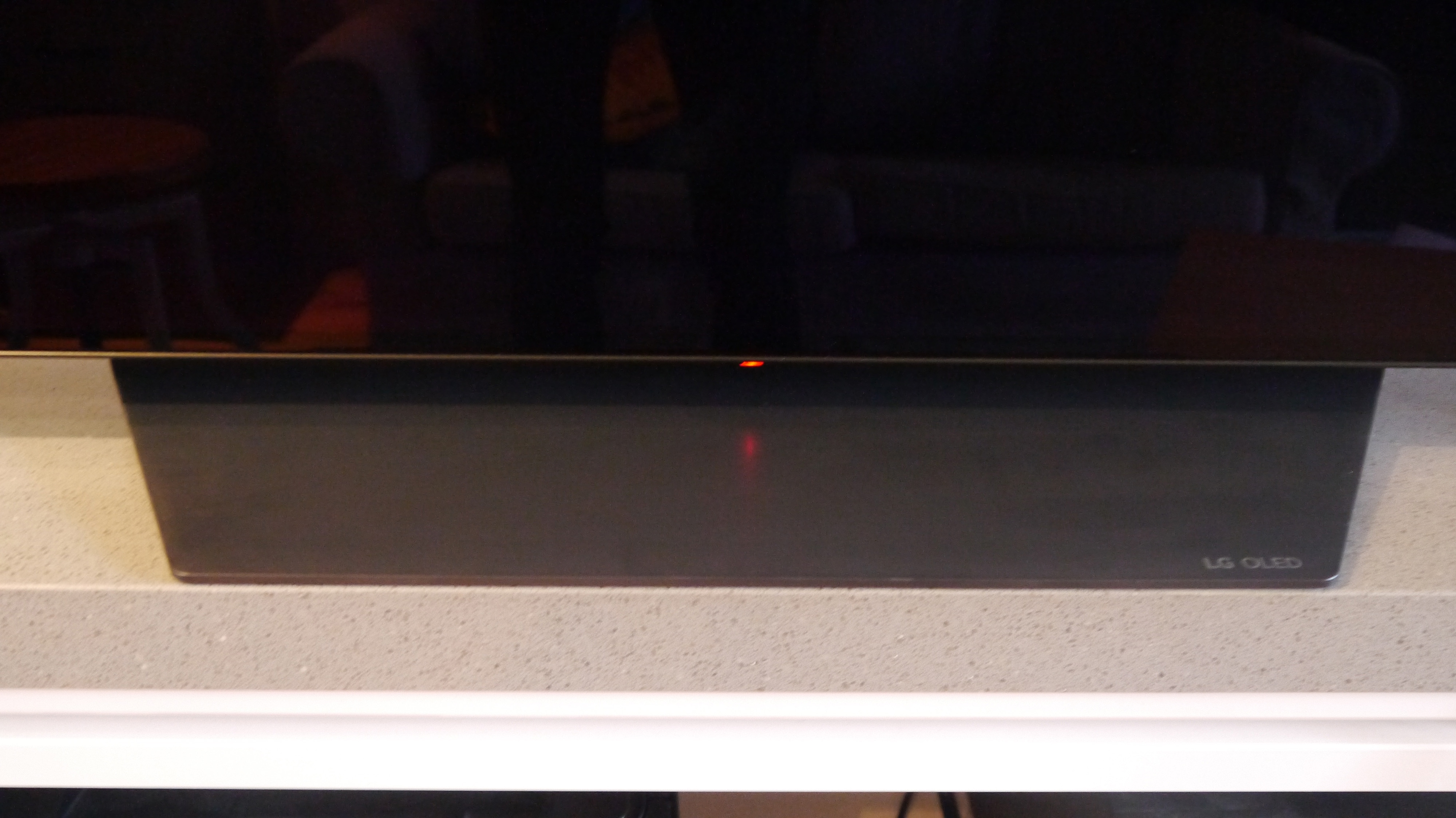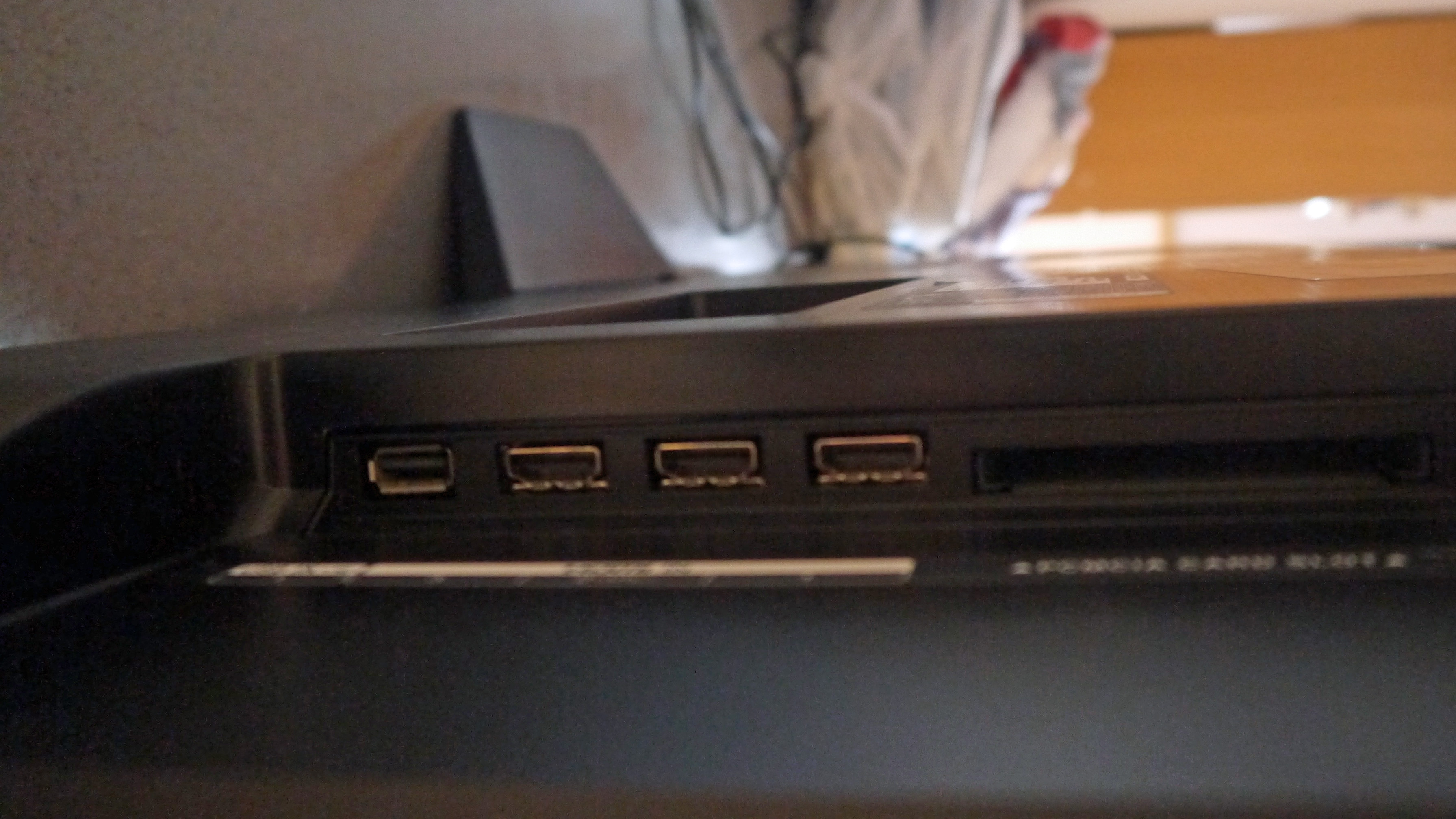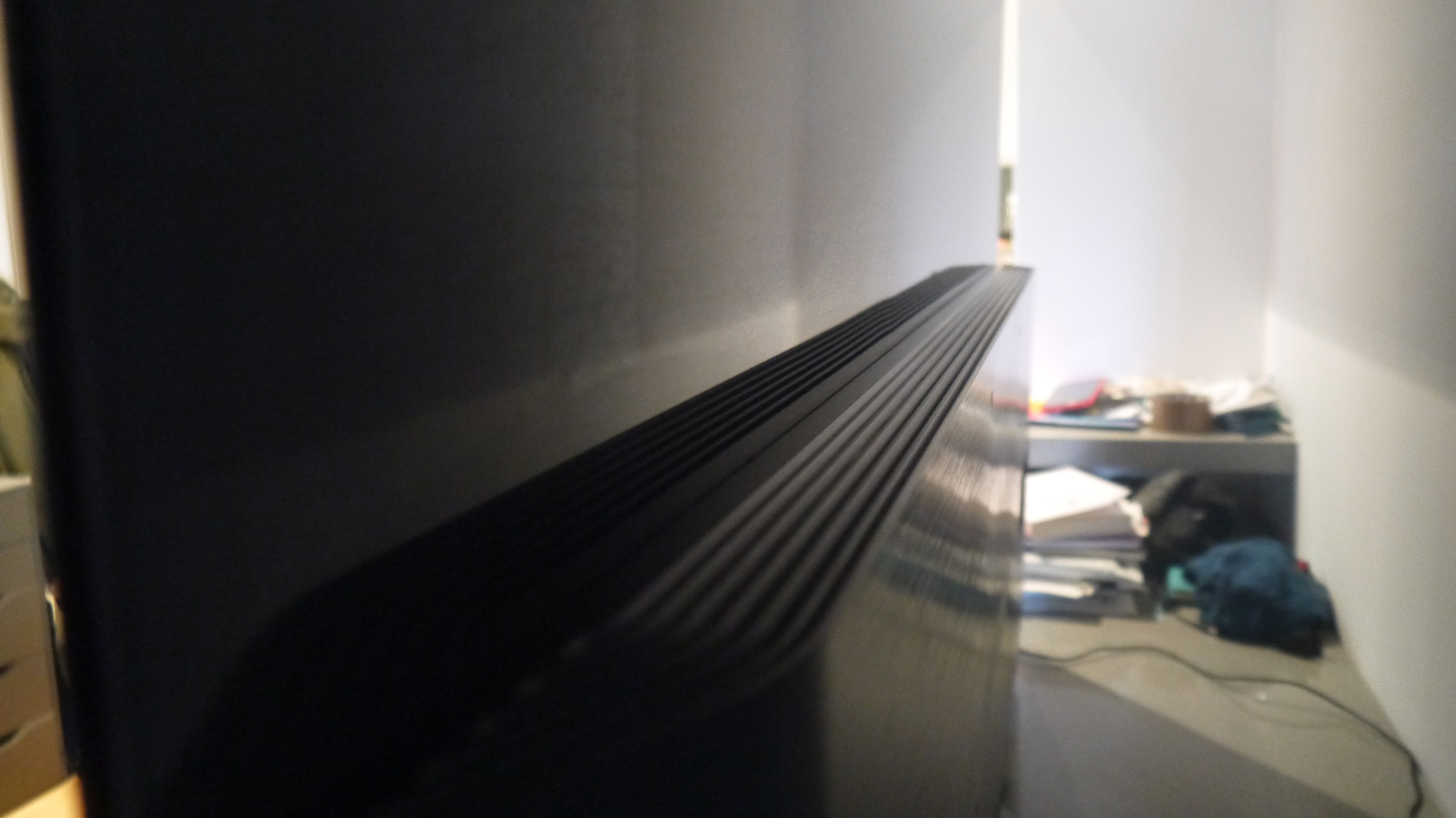TechRadar Verdict
If the B9 is all your budget allows for, it’s a solid purchase, though scrimping and saving for the LG C9 may be a better decision in the long run.
Pros
- +
LG’s cheapest 2019 OLED
- +
Rich colors and sharp detail
- +
webOS smart platform
Cons
- -
Not the latest processing
- -
Some noise in dark scenes
- -
No HDR10+
Why you can trust TechRadar
The LG B9 OLED is possibly the most fascinating OLED set in LG’s 2019 TV range – in that it’s the cheapest one. And in a market full of high-performing OLED televisions, many of us are simply looking for the cheapest way to get one in our home.
Acting as the successor to the LG B8, this new television again offers a crisp OLED panel housed in cheaper casing and powered by older processors in order to keep the price below that of its more premium siblings, the LG C9, LG E9, and LG W9 OLED.
The question is whether that drop in processing is a necessary compromise to keep the price down, or whether it stops the B9’s panel from achieving its potential – and the answer is a bit of both. Here’s what we made of it in our LG B9 OLED TV review.
- Samsung vs LG TV: which TV brand is better?
Price and availability
The LG B9 OLED comes in 55-inch and 65-inch sizes in the UK, with a third 77-inch model coming at some point in the US too. The B9 now retails at $1,399 / £1,299 (around AU$2,030) for the 55-inch OLED55B9, or $2,299 / £1,799 (around AU$3,340) for the 65-inch OLED65B9 – helped by a price cut that came only a few weeks after launch.

Design
The LG B9 OLED may not seem too different from the LG C9 at first glance, with a minimal bezel hugging LG’s 2019 OLED panel and a small LED along the bottom bezel showing the TV’s power state, but the B9 does however sport its own TV stand, with a sharply-angled trapezium shape – unlike the C9’s wider curved stand, which is designed to funnel audio out of the downward-firing speakers towards the viewer.
In terms of dimensions, however, the 55-inch B9 measures 1228 x 744 x 246 mm – practically the same as the C9’s 1228 x 738 x 251 dimensions.
The other major difference is that, as the cheapest OLED from LG this year, the B9 uses slightly less premium materials... though the plastic casing at the back of the set is innocuous enough, and still manages to show off the thin dimensions of the flatscreen panel.
Sign up for breaking news, reviews, opinion, top tech deals, and more.

At the back you’ll get four HDMI 2.0 ports – with HDMI ARC – and three USB 2.0, CI, Ethernet, antenna, and optical inputs.
Despite being the runt of the OLED litter you’ll also get LG’s Magic Remote (batteries included) – with precise IR navigation, a responsive clicker wheel, and stylish wooden surface in a black plastic casing. There are dedicated buttons for Netflix and Amazon Prime Video too, though sadly not for FreeView Play (UK).
Design TL;DR The B9 isn’t overly flashy in its design, but cuts a similarly sharp, minimalist design to other LG OLED sets. LG’s Magic Remote is always a plus, too.

Smart TV: webOS

Screen sizes available: 55-inch, 65-inch | Tuner: Freeview HD | 4K: Yes | HDR: Yes (HDR10, HLG, Dolby Vision) | Panel technology: OLED | Smart TV: Yes/webOS | Curved: No | Dimensions: 1228(w) x 744(h) x 46(d) mm | 3D: No | Inputs: Four HDMIs (all 2.0), three USBs, RF tuner
The B9 OLED benefits from LG’s standout webOS smart TV platform, offering a fast, responsive, and well-organized interface with which to access all of your TV’s online and broadcast capabilities.
The most important part of your remote is the home button, which brings up the main menu over whatever you’re watching onscreen. It comes up as a horizontal bar with thin, slanting icons for the various apps and inputs you might choose for your TV, and a secondary bar that comes up with specific titles when you hover over the main icon.
These include NOW TV, Netflix, Amazon Prime Video, Rakuten TV, and (in the UK) the likes of BBC iPlayer, ITV Hub, All 4, and My5 – with more frequently used apps shown closer to the left hand side.
- LG B9 vs LG B8 OLED: is it worth the upgrade?
The remote has a hold-to-speak microphone for picking up voice commands and finding relevant results in the smart platform – and is a breeze to use, easily picking up the names of apps, or showing you services that include a specific title. Google Assistant will be answering your queries, with the option to link up with Google Home speakers for hands-free voice commands from other devices, or with Alexa through connected Amazon Echo products.
Plugging in a games console like a PS4 or Xbox One will also bring up a notification of a connected device, making it easy to click through to different inputs without jumping around various menus to do so.

HD/SDR Performance
But most important, of course, is the picture – and the LG B9 OLED benefits from the same OLED panel as its more premium siblings. That means you get the same natural-looking shades and tone mapping, and a wide color gamut for rich and nuanced images – along with increased contrast, brightness control, and faster refresh rates for a smoother image.
OLED sets tend to have better viewing angles, too, as there isn’t a backlight shining in a specific direction – though the latest QLED Samsung TVs have managed to work around that.
When watching AMC’s Mad Men in HD, the B9 aptly displays the period drama’s pastel color cars, cigarette cases, and textured blue and black suits with accuracy and consistency – even if the set may lack the processing power to really to push its panel to its full potential.
The B9 does deploy a less advanced processor than the C9, using an a7 Gen 2 chip rather than the latter’s a9 Gen 2. There’ll still be a notable improvement over last year’s B8, though the comparatively low price tag means you are seeing a drop in visual quality over more premium LG sets – with slightly more motion judder in fast-moving scenes, and the upscaling from SD or HD sources not being as sharp as it could be. It’s still, however, a quality picture, as to be expected of an OLED panel.
Gaming in HD was hugely impressive, too, with less than 13.1ms input lag keeping our playthrough of 2016’s Doom responsive and smooth, and the OLED panel providing brilliant contrast between the glowing HUDs of demons with the dark landscape around them.
HD/SDR Performance TL;DR The B9’s processing and upscaling holds back what is otherwise a brilliant, color-accurate picture.

4K/HDR Performance
Things step up a notch with 4K UHD playback, adding incredibly fine detail to the images onscreen – and showing the B9 OLED at its most comfortable.
It helps that you get the dynamic Dolby Vision HDR standard, for titles and apps that support it – i.e. Netflix, and certain 4K Blu-ray discs – though you’re missing out on the competing HDR10+ standard supported by Samsung.
Most premium sets will still only pick one of these two formats, though some brands such as Panasonic are ensuring mid and high-end TVs are compatible with both, and so it’s a shame not to see everyone doing the same. HLG (Hybrid Log Gamma) is also supported.
The B9 also excels at truly black areas of the screens and using the OLED panel’s capabilities to contrast that with rich colors and lights. However, the mid-price processor can’t stop some video noise creeping in, at least when the screen is largely dark and trying to discern between similar shades, or track motion through shadows.
- What are the best OLED TVs?
When watching HBO’s new show Watchmen, there was a notable difference between the strength of daytime scenes and those set at night, the latter having more trouble maintaining a crisp and clear picture – even if it’s still an impressive picture overall.
The B9 doesn’t get particularly bright, meaning that even HDR formats don’t have the light they need to make colors feel truly vivid, and differentiate between shades that are close to each other.
While dim screens are often criticized in OLED TVs, the infinite contrast between light and dark usually prevents this becoming a problem – and it honestly isn’t much of one here. But keep in mind you’re not getting the knockout experience of the LG C9.
4K/HDR Performance TL;DR There’s a notable drop in brightness compared to higher-end sets, meaning that HDR scenes aren’t quite as arresting as they could be.

Sound
Despite the drop in processing, though, the B9 OLED doesn’t suffer as much in the audio department. You’ll get the same 2.2 channel audio as the C9, with 40W Dolby Atmos speakers providing a nuanced soundscape and depth across low, mid, and high frequencies – with the Atmos capability to simulate surround sound even through the built-in drivers. That's a significant boost from the B8's 20W speakers.
Whereas the C9’s TV stand funnels downward-firing audio towards the viewer, though, the B9 doesn’t offer the same thoughtful design, and the audio is slightly less immediate as a result.
As ever, a dedicated AV setup or soundbar would likely be an upgrade, though do make sure any supplement hardware offer more than the B9 out of the box.
Other panels to consider
Not sold by the LG B9 OLED? It’s worth noting that the C9, having been on the market for considerably longer, is now retailing for only £1,499, making it almost as cost-effective as the £1,299 B9. If you have the extra cash, it will certainly be worth the upgrade, though if the B9 is as far as your budget will go, you’re still getting a capable OLED panel.
Only the Hisense O8B OLED has been able to match LG for sheer value, though we had a far less consistent experience, and multiple interface and format issues.

Verdict
The LG B9 OLED absolutely delivers on its promise – to give shoppers a cheaper way into a world of OLED, with the sharp contrast and vivid colors that involves.
Inevitably there are some corners cut to get there, and you’re not getting the excellent experience of the C9 or E9 – while the delayed launch of the budget B9 model, and continuing price cuts to more premium sets, means this year’s B Series isn’t quite the deal it would have been a few months ago.
If the B9 is all your budget allows for, it’s a solid purchase, though scrimping and saving for the LG C9 OLED – and keeping an eye out for it in the Black Friday and Cyber Monday sales – may be a better decision in the long run.
- LG TV 2019: what sets are yet to come?
- Our LG discount codes can help you save on your next purchase.

Henry is a freelance technology journalist, and former News & Features Editor for TechRadar, where he specialized in home entertainment gadgets such as TVs, projectors, soundbars, and smart speakers. Other bylines include Edge, T3, iMore, GamesRadar, NBC News, Healthline, and The Times.
